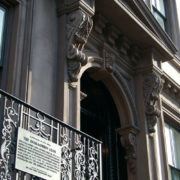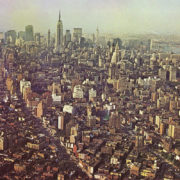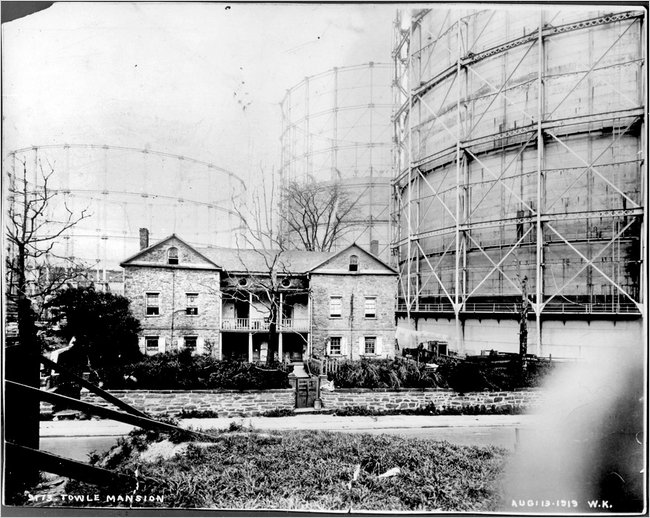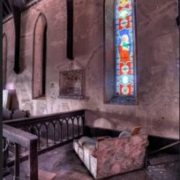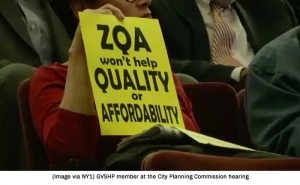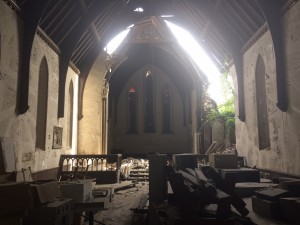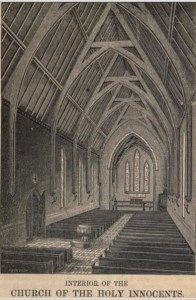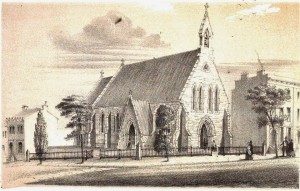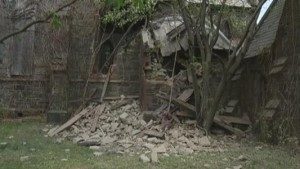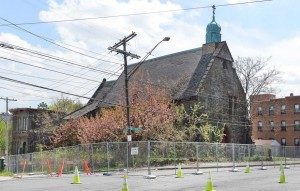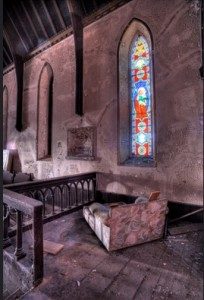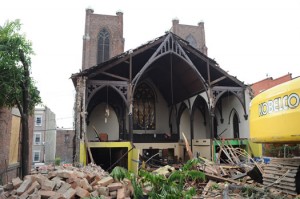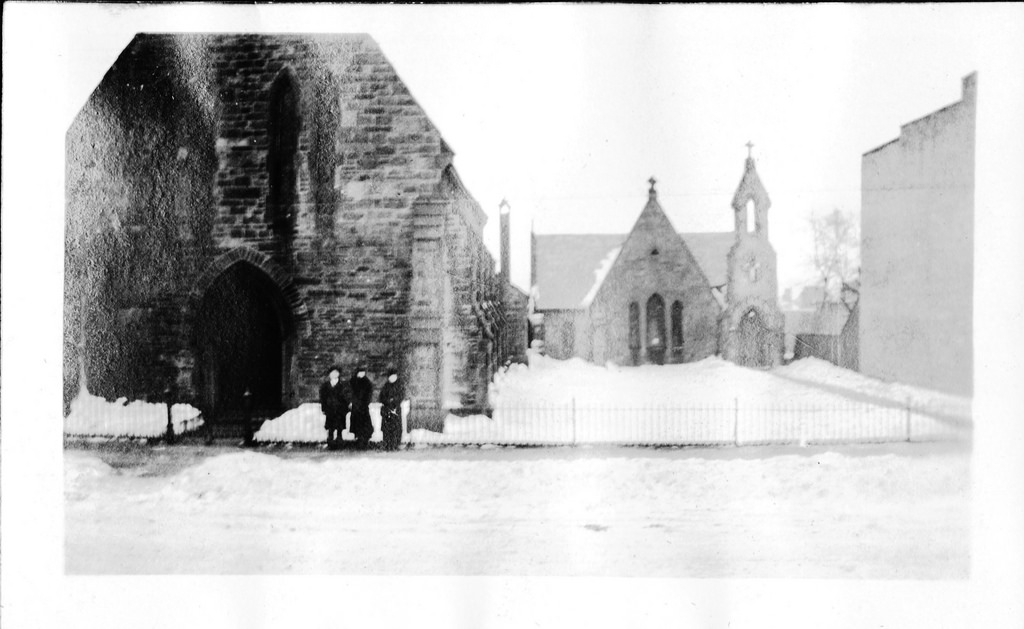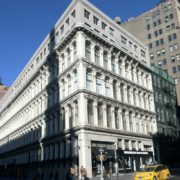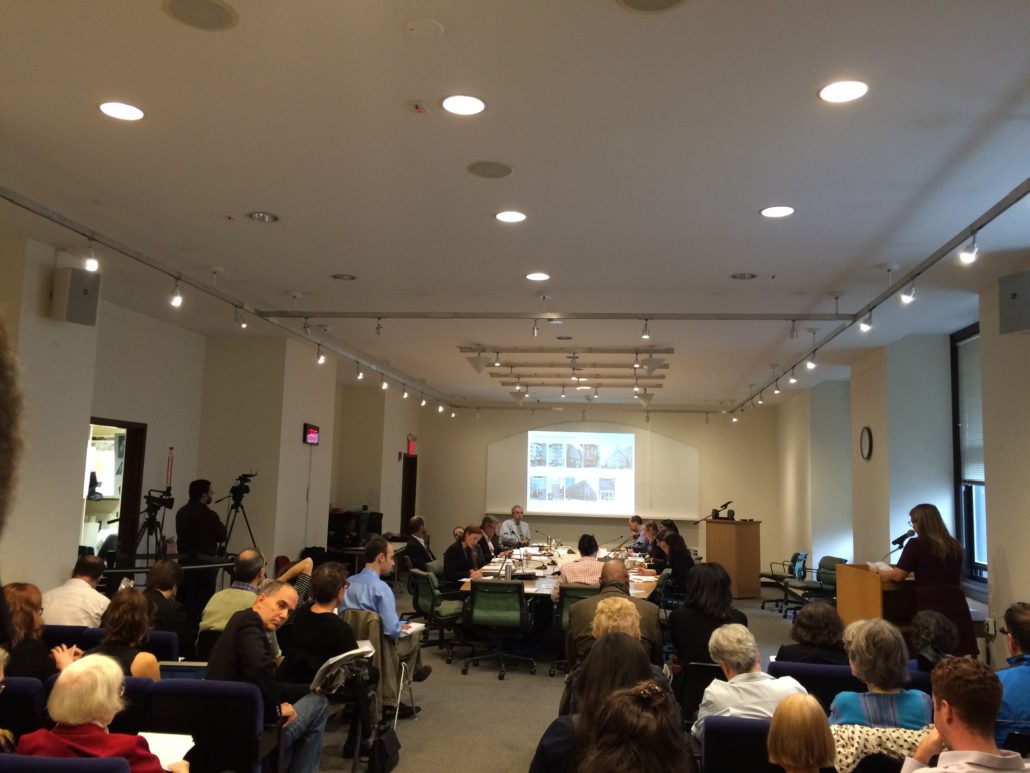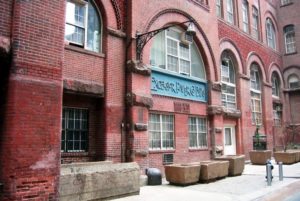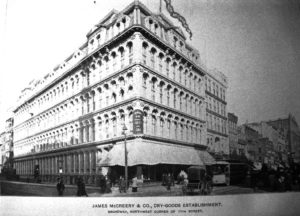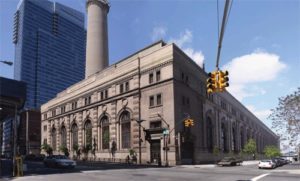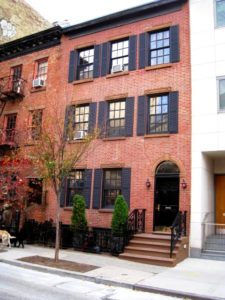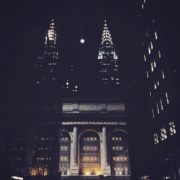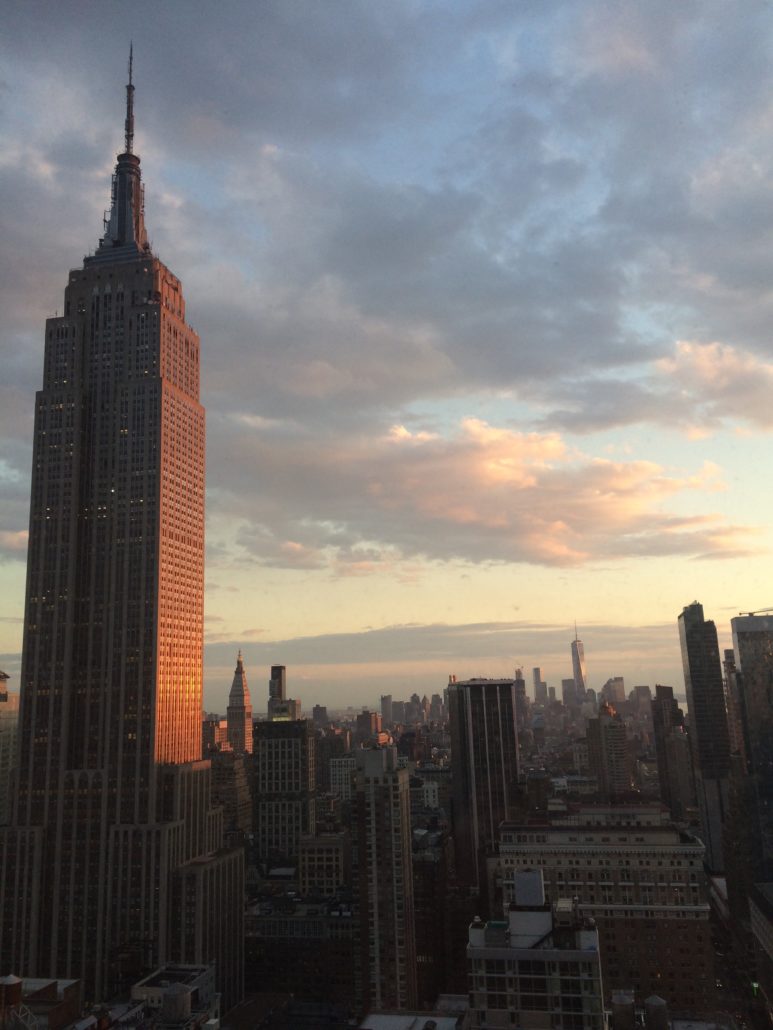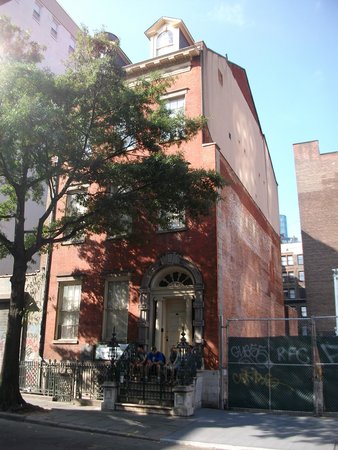Recap: Historic Preservation Panel
Ruth Osborne
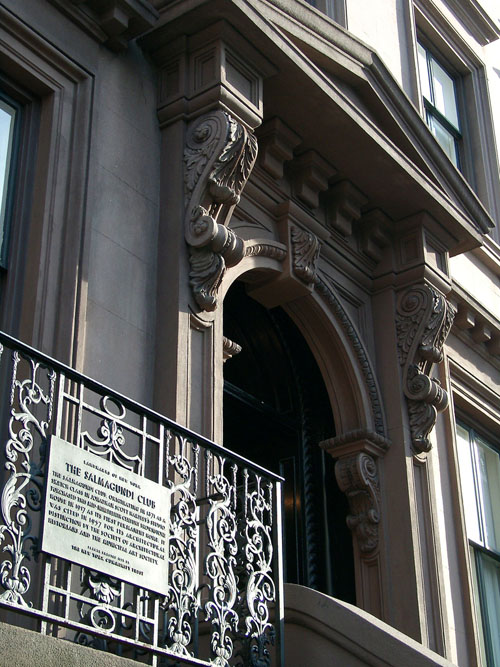
The Salmagundi Club on 5th Ave. Courtesy: Salmagundi Club New York.
What Do the Last 50 Years Tell Us About the Next 50?
That was the question of the night earlier this month when three individuals from organizations across the city came to The Salmagundi Club to discuss the challenges and successes of historic preservation in New York, and how we can learn from these past fifty years to better care for our urban landscape today. The evening was co-sponsored by the Greenwich Village Society for Historic Preservation, an organization that has worked since 1980 to support the preservation of historic buildings and areas below 14th Street. The speakers for the evening were:
Andrew Berman (Executive Director, Greenwich Village Society for Historic Preservation)
Simeon Bankoff (Executive Director, Historic Districts Council)
Adam Steinberg (Senior Education Associate, Lower East Side Tenement Museum)
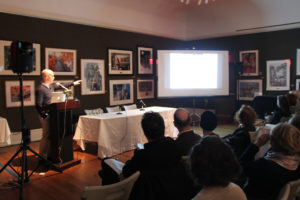
Andrew Berman of GVSHP. Courtesy: GVSHP.
Greenwich Village Society for Historic Preservation
Mr. Berman began with an overview of the successes of landmarking and zoning in the West and East Village, as well as areas of Soho and Noho, over the last 50 years of the Landmarks Law being in effect. But there wouldn’t be a law without there being a need, right? So the audience also heard about several current challenges the GVSHP is seeing in historic preservation, knowledge of which demonstrates the Society’s thorough understanding of the system of preservation in the city and the various groups involved in it. These include:
(1) Recent attempts to roll back zoning restrictions in historic districts that Landmarks Law has won over time.
(2) An increasingly permissive Landmarks Preservation Commission towards allowing new construction, demolition, and alterations to take place within landmarked buildings and districts that pose risk to the historic character of these neighborhoods. With new developments that are allowed to exceed the height limits of a designated historic district, all to often it turns out that landmark and zoning protections still do not prevent escalating prices which may force out long-time residents or businesses (though it can be slightly beneficial in both respects)
(3) A tendency to conveniently overlook (sometimes controversial) new development in areas being considered for historic designation until they are completed, or carving them out from the borders of the newly designated district.
(4) A push by the real estate industry (specifically, REBNY) to undermine landmark and zoning protections throughout historic areas, a topic on which we posted last year and one which GVSHP has worked diligently against.
Historic Districts Council
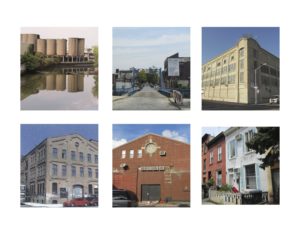
Gowanus historic sites for designation. Courtesy: HDC.
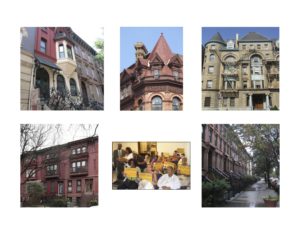
Bed-Stuy historic sites for designation. Courtesy: HDC.
Next, Mr. Bankoff spoke on the educational and advocacy work of HDC throughout hundreds of communities in each of the five boroughs. Since 1971, this organization has served to support residents in the designation of historic landmarks and districts, and to engage with the needs of those who will be impacted by the preservation of streets and buildings in their respective neighborhoods. His presentation offered a critical perspective on the approach to preservation in the city, looking at the political and community approach to and acceptance of historic designation since its early days in the 1960s through more recent challenges. Mr. Bankoff shot down the myth that landmarking and preservation is way out of control and is taking over the city and stunting its growth: only about 3.5% of the entire city is landmarked after fifty years, representing a mere 34,000 buildings out of about 1 million. In fact, the trending slump towards historic preservation since the 1960s, as well as the narrow focus the past fifty years on preservation in Manhattan below 110th Street, has caused HDC to see the need for attention to northern Manhattan at the other boroughs. In striving to see historic preservation serve a truer representation of the city’s population, Mr. Bankoff and his colleagues’ current efforts are aimed at projects in East Harlem and Inwood, Ridgewood and Jackson Heights, Bedford-Stuyvesant, Gowanus, East New York, Sunset Park, Far Rockaway, and Harrison Street on Staten Island. Not to mention considering how best to preserve ephemeral traces of culture such as wall murals that cover areas like Harlem. The overall lack of resources for historic preservation – not to mention the fact that the LPC is one of the city’s smallest agencies – has drawn HDC into offering conferences, workshops, talks, walking and bicycle tours for what are mostly, he termed, “kitchen table groups”. These groups are what best represent the actual needs and wants of the residents living across the city’s five boroughs, but it is unfortunately these groups that also have no connection of their own with developers, elected officials, and agencies like the LPC. For those outside of Lower Manhattan, who are without strongly-supportive community-based organizations like the GVSHP, the HDC works actively to fill in the gaps of preservation throughout the city, aiming to do a more comprehensive job of designating landmarks and areas of historic and cultural significance.
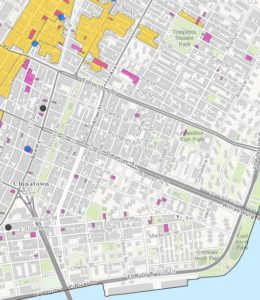
LES Landmarks as of 2016. Courtesy: Adam Steinberg.
Lower East Side Tenement Museum
Dr. Adam Steinberg, senior educator at the Tenement Museum and a scholar of the preservation movement in the U.S., offered a look at the field’s development over the past fifty years, as well as various critiques from historians. According to many, preservationists are thinking too narrowly. They are missing the opportunity to think beyond the boundaries of preserving a building or even a district as an end in and of itself. There is also a social justice impact their work can have that they don’t properly utilize to their advantage. Some critics, as Dr. Steinberg mentioned, pointed to the true roots of historic preservation in the Progressive Movement of the 1890s. The Progressive Movement being itself a response to the corruption that came along with the massive industrialization of New York City at the time, these social advocates worked to create heritage sites and parks throughout the city that would make history and culture more accessible for its poorer residents. These place-markers of significant moments and people aimed at engaging the “huddled masses” of the contemporary city with the rich historic landscape in which they lived and worked and voted. Missing the opportunity to expand their work and impact by connecting with the Progressives, preservationists in the latter half of the 20th century are disjointed from the very community planners and affordable housing advocates that could benefit from their work. Dr. Steinberg offered his study of the Lower East Side of Manhattan as an example of the failure of preservationists to connect with the concerns of affordability and displacement felt deeply by the neighborhood’s residents in the 1990s. There is still to this day very little preservation in that neighborhood of the city, despite how much rich history is contained within its few blocks. The inability of the Tenement Museum to work with the neighborhood to create a designated historic district in the LES can be seen as demonstrative of the lack of connection felt by local residents and landlords.
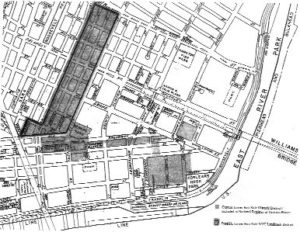
LES proposed historic district. Courtesy: Adam Steinberg.
Their greatest concern was displacement, due to increased gentrification, which was being followed by new development in the area. But they couldn’t see how designating a historic district could help them stay in their rapidly changing neighborhood. Preservationists, Dr. Steinberg argued, need to know more about how historic designation impacts the affordability of a neighborhood, as well as more about the correlation between a district’s designation and the displacement (if any) occurring there. Recent studies, he mentioned, have shown that a neighborhood’s designation does not necessarily lead to displacement. But he urged preservationists to do more work with the actual people residing in the areas of the city they see as needing designation and landmarking; something it seems both the GVSHP (through their research efforts and engagement with city policy and elected officials) and the HDC (through their advocacy with “kitchen table” groups) see as crucial to the work of preservation in New York. In the opinion of recent critics, only growth can happen if there were to be a greater acknowledgement of the urban planning and policy discourse of the early 20th century that laid the groundwork for preservation today, as well as more discussion of how this work can advance urban development and adapt to the immediate needs of local residents. Preservation should be a means to an end – the public good being that ultimate end.
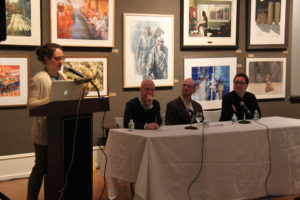
The Panel. Courtesy: GVSHP.
The panel that followed discussed the recent difficulties encountered in the work of historic preservation in New York. With the many layers of New York’s history, there will always be competing stories about one particular area or building, and thus a difficulty choosing which story to tell with the preservation of that site. The role of historic house museums in supporting historic preservation in their surrounding neighborhoods was also touched on, though they also have the curious battle of figuring out how to tell their many stories. Mr. Bankoff related a recent HDC event on Staten Island hosted at the Alice Austen House; while the house itself served as an example to convey the benefits of historic preservation work, the HDC was then able to open up a discussion on landmarking and designation in other areas of the Island.
One audience member asked about the ability to offer city officials alternative spaces for new development when there is the potential for that development to destroy historic buildings in the process. There are indeed areas of the city that do not hold as much historic significance in their architecture as others do that are being heavily developed. And a city will always have very obvious geographic boundaries. What Dr. Steinberg suggested was that we need a society-wide movement that addresses multiple issues at once, as he saw the need for in the LES.
Mr. Berman acknowledged the struggle of pushing preservation up from being the last item on an elected official’s agenda. There will always be vested interests that are enemies of an effort that isn’t always financially efficient nor pleasing to foreign investors in the city’s economy. One audience member reluctantly, but realistically, conceded that it will never be a top priority. While all the panelists, as well as myself, have been critical of the LPC, they all acknowledged that it has done much good work in the city since their inception. There are dedicated commissioners amidst others who may not be there for the right reasons, and, Mr. Berman reminded the audience, we are all responsible for who we elect to our city agencies. And while there is currently a great economic drive behind the push for new development (which often inhibits the work of historic preservationists, but does not necessarily have to), he encouraged the audience that it was possible for this administration to be even more vigorous about preservation and that we need to get them there. Mr. Bankoff agreed that it was unfair to ask a city agency to drive home one of the many thousands of opinions of New Yorkers, but we do still need to hold our representatives to high standards. And this is exactly why organizations like the HDC and the GVSHP exist.
At ArtWatch, we consider it essential to create spaces in which open dialogue concerning historic buildings, community needs, and city growth can take place. This enables a more transparent view on situations that are bound to have multiple points of view, but which require we understand the aims and needs of each party if we are to see New York develop and flourish. Questioning the aims of change and new development that impact the architectural fabric of a city and how its residents are able to live day to day is an essential part of good stewardship of our cultural and artistic heritage. The state of historic preservation in New York, even after fifty years of Landmarks Law, is constantly in flux. And it is exciting to see the energy with which preservationists and scholars approach their work in the field, as well as to consider what it might look like for preservationists, urban planners, affordable housing advocates, and community residents to find synergy with one another and grow their efforts. We hope for more opportunities in the future in which we can serve as a platform for discussions like this, bringing individuals from different backgrounds together to see how their interests overlap and how they might collaborate to make a greater impact.

